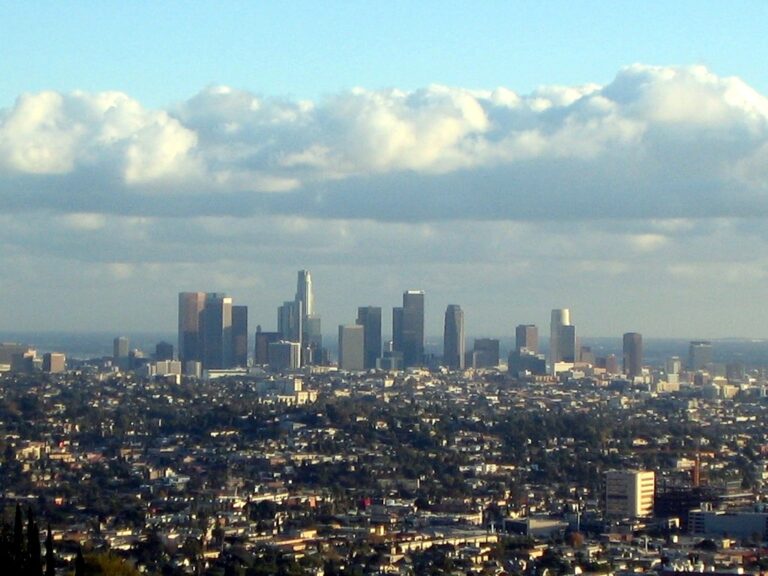Going On: After the Apocalypse
Do you have a plan in place for what to do after an apocalypse? Survivalists do. Survivalists, mainstream North American culture thinks, are a little weird. They prepare for severe disruptions in the order of everyday life, for carrying on when these disruptions obliterate the conveniences of our extensive infrastructure. With their ‘bug-out bags’, they can leave town at a moment’s notice, carrying everything they need for basic survival. Their bags usually include water, clothing, easy-to-prepare food, weapons, and something for shelter, all based upon location and family type. The purpose of bug-out bags is eponymous: to ‘get the hell out of Dodge.’
Some survivalists use bug-out bags as a just-in-case item, like storing extra water in case of a power outage. Yet others (I would say most) keep their plans up-to-date and supplies fresh because they believe there is a high probability that a major, long-term disruption in society will occur in the not-so-distant future. But do survivalists really have a handle on what drives one to survive? Characters in post-apocalyptic fiction go on after the end. In fact, a character from post-apocalyptic fiction would probably survive longer than your average gun-toting survivalist—and here’s why.
Preparation is futile
In literary apocalypses, reasonable precautions—food stockpiles, urban and rural survival skills—sometimes occur, but they do not make for tense reading. Besides, attempting to prepare is ultimately futile—we cannot fully prepare for something like the breakdown of society. While preparation might give you a survival edge, its value lies only in the illusion of safety and in peace of mind. Yes, an extra gallon of water will decrease your thirst the next day. But what about when your supplies run out?
If preparing a bug-out bag or making other arrangements does not adequately prepare you for the end of civilization, what does? We think that we can control the future. The lesson we learn from post-apocalyptic fiction is that we cannot. To grapple with the aftermath, we must find an all-encompassing reason to go on.
In Octavia Butler’s Parable of the Sower, the protagonist Lauren Olamina prepares a bug-out bag to take with her when roving drug addicts destroy her neighborhood’s walled compound. She brings food, seeds, and a religious text she wrote called “Earthseed: the Books of the Living”. Once the food runs out, the text—and her vision for a better way to relate to one another—keep her going.
It seems kind of silly, in a way, to say that the only way to deal with an apocalypse is to find a way to go on for one more minute. But after the end of all that you have known, no one will ship coffee from one part of the world to another; lights will go out; large swaths of the Internet would go down. Yet humans would still exist, and humans would need to talk with one another.
What would they say? What is there to say, in the face of such disaster? There are stories to tell, small relationships to cultivate. The scale of relationships shifts. But these close connections between two human beings provide a rock-solid reason to continue. The mindset of characters in post-apocalyptic fiction is hardier than your average survivalist.
In some stories, like Denis Johnson’s Fiskadoro, societies are made anew; in others, no society is ever able to thrive again. In Cormac McCarthy’s The Road, one of my favorite post-apocalyptic novels (a book I’ve mentioned before) a father and son push a shopping cart down a long stretch of empty highway. Their civilization, eerily similar to that of modern North America, ended in an apparent nuclear disaster/large meteor impact, which results in the death of all plant and animal life. Left with few options, they wander.
Going On
What does it mean to go on after the end of everything you have ever known? For the Man and the Boy, it means walking onward, through ash and uncertainty; living through the collapse of the infrastructure that makes life in North America possible. While trodding through limbo, they have little opportunity or desire to think about what will happen five days or five years from now—survival is reduced to what will happen at the end of the day, at the end of the minute, at the end of the next breath. Thought is day-to-day, and it’s the only way they can go on—thinking too far into the future would mean being distracted from immediate survival.
Characters continue by simply moving forward, knees bent. The apparently empty physical act of walking becomes supremely meaningful: it is walking forwards, walking towards, leaving what happened previously behind. Existing for one more minute. In these novels, characters move forward into the absolutely unknown and are forced daily to face the question: what will come after the breakdown of society, of the whole of civilization? They shoulder the burden better because they are not self-sure that they can manage it. Doubt, confronted by the strength of small human connections, is lessened.
Humans like to plan for disasters, like to feel that they, instead of the random chaos of the universe, are in control. Disaster management plans take risk percentages down closer to zero. Yet these plans do not, cannot, really prepare us. Lessons learned from apocalyptic fiction offer a more realistic portrayal of what you really need to do in order to plan for a disaster: ask yourself what your reasons are to continue living.
While the apocalypses depicted in literature take many and varied forms—nuclear warheads, natural disasters, alien invasions—the characters’ responses to catastrophe is dependent upon how they answer this question. Characters must determine what they need to survive, where their next footfalls will be, and, perhaps of greatest importance—how it is possible to go on.


